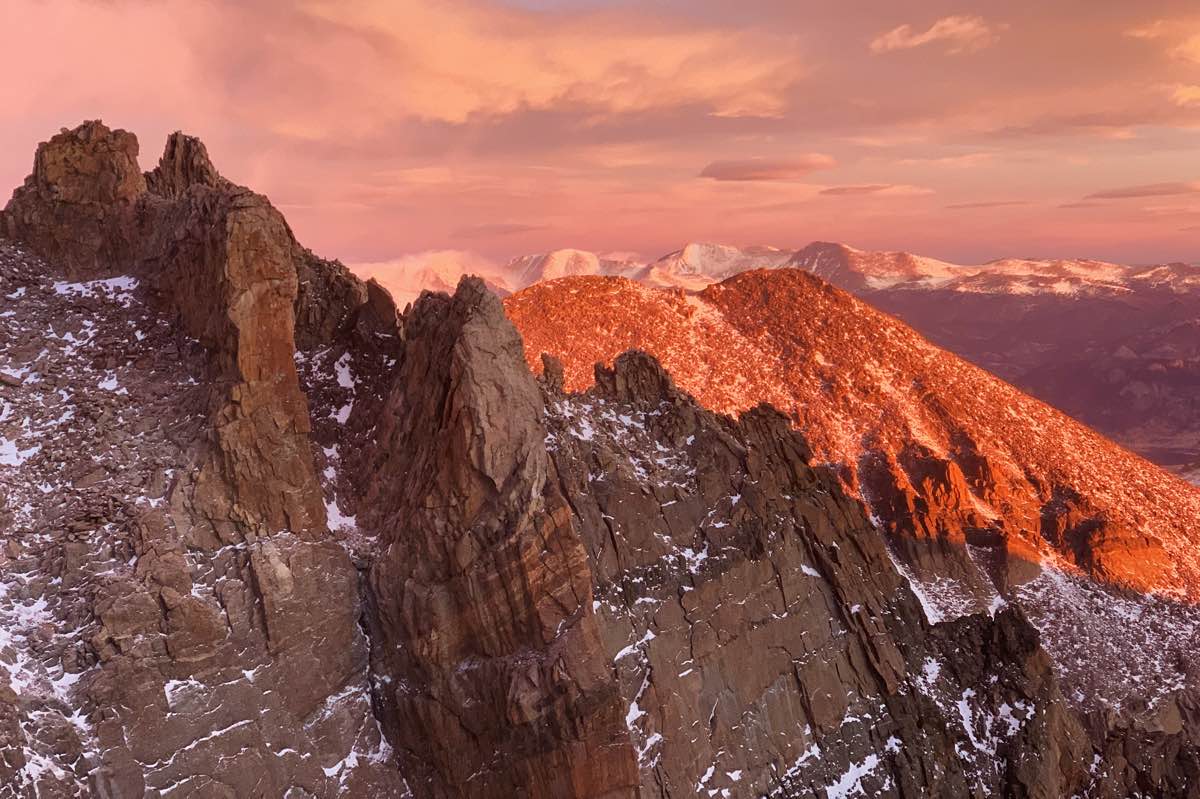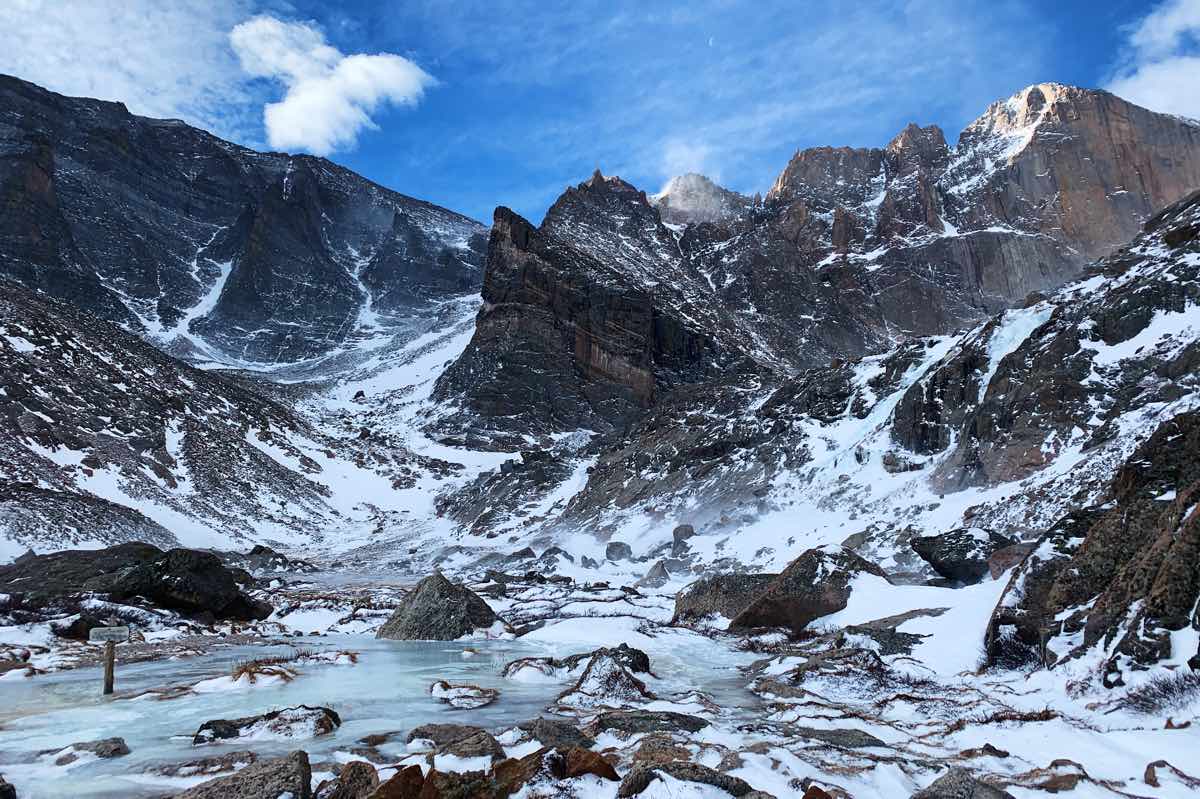I reach the Longs Peak East Trailhead a little after 4:30 a.m. The parking lot is empty, which isn’t surprising for such an early hour on the penultimate day of 2018. I’d been staying across the way at the Dao House for a few days with Matt, my 17-year-old cousin, who’s visiting from Phoenix, Arizona.
Earlier in the week, we’d hiked up to Chasm Lake in a complete whiteout, only getting a view of the Diamond (the East Face of Longs Peak) when returning back to the lodge. I kept hoping that the fog would lift, so he could get a close-up perspective of the majestic mountain. Despite the lack of visuals, he’d still been highly enthused by the outing, frequently commenting on the ethereal beauty of this winter wonderland. I have ran and hiked this trail dozens of times over; it’s easy for me to gloss over the lower parts of the mountain with my attention only focused on the view up ahead. Through Matt’s eyes though, I’m reminded that even socked in, the place still conjures a distinct feeling of wonder and that every inch of the mountain can capture the imagination.
When I mentioned that I’d be getting up early to cap off the year with a final summit of Longs Peak, he asked me in an anxious tone not to go.
“Why would you? It’s cold and dangerous up there.”
I told him that I’d be fine, that I frequently scale the mountain in the winter, and that there was no need to worry. He shrugged, seemingly unimpressed by my canned response and told me to be careful.
I pull the key out of my truck’s ignition, muting Ornette Coleman’s strident saxophone solo, and sit in silence for a few minutes. I take a few sips of my now cold instant coffee before donning my spikes and starting up the trail. My headlamp flashes on a couple of signs posted at the ranger station that picture two missing persons out somewhere on the mountain.
As I jog up the icy trail in the dark, I can’t get Matt’s comment out of my head. “Why would you go?” While I’d glossed over my response in the comfort of the hotel room, his question now felt more immediate and ominous. Had the frequency of my visits up the peak numbed me to its dangers? Had I become complacent to the risk of winter travel? Why was I up here in winter by myself at such an early hour?
Doubt doesn’t necessarily signify a lack of confidence. Rather, it can help us dig deeper into the nuances of what we perceive as certainties. In the context of running up mountains, fitness is a double-edged sword that can both enable adventure, yet also create a false sense of invincibility. I shouldn’t assume that familiarity means that I am immune to the risks. The true value then for repeatedly scaling mountains lies not in the similarities of each outing, but rather in the commanding necessity to pay attention to its ever-changing environment.
I reach the base of the Loft couloir as the sun peaks over the horizon. A faint set of footprints form a line up to the ice-stained headwall. The snow shimmers like tinsel on a Christmas tree in the early morning light. Dense lenticular clouds with hues of pink and orange ripple in the background of the wind-sculpted cliffs. This is one of the most spectacular sunrises I’ve ever experienced on this mountain. With such a scene unfolding, the why of my being here seems obvious. Who wouldn’t want their senses flooded with such visual bliss? As the cold creeps in though, the moment rapidly dissipates. As I resume my upward progress, I feel deeply grateful for my body’s ability to transport me to such a place. Yet, as the breeze picks up, I’m also aware of the mountain’s stark indifference to my presence, a chilling prod to stay attentive and humble.
Call for Comments (from Meghan)
- What motivates you on an adventure in severe weather, like in winter’s bitter cold or perhaps in extreme heat? Or, asked as Joe’s cousin did, why would you go?
- What do you make of that relationship between familiarity and perceived risk to which Joe refers? How do you remind yourself to stay alert and aware of your surroundings even when you know and feel comfortable in them?


